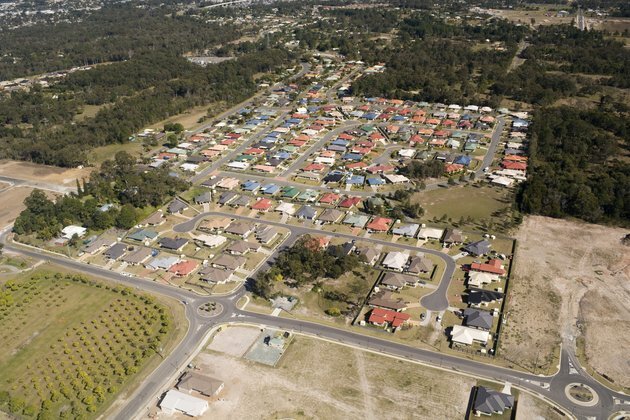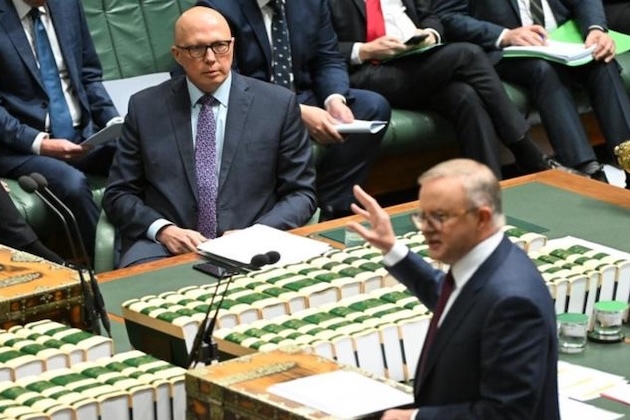Census year is the time to work together on a national settlement strategy
The Conversation
18 Aug 2020, 02:08 GMT+10

COVID-19 has raised many questions about how we plan our cities. The issues affect all of us, whether you are in Perth or 3,300 kilometres away in Sydney. Common issues suggest a common approach, but how might we achieve that?
Common approaches require a common understanding and by chance next year, 2021, is census year. The output from the census is one of the most important inputs to city and regional planning. It's an opportunity for planners to directly reference the detailed data of the people and households of the communities that make up Australia.
The issues the COVID-19 pandemic has confronted us with raise the question of what other common-ground issues could be explored.
Read more: Coronavirus has changed our sense of place, so together we must re-imagine our cities
Why do this?
Interestingly, an "alignment of the stars" is occurring to some degree.
The Planning Institute of Australia (PIA) is calling for a national settlement strategy. Among other things the institute suggests a national settlement strategy should:
express long-term growth and liveability outcomes - nationally and for the states and regions
provide a context for a national population policy
set performance measures for liveability and productivity outcomes.
A core benefit would be better-targeted infrastructure funding.
But the states and territories have already signed off on 57 regional and capital city plans. We need to think a little about what these plans mean - we cannot just stick them together. We need to understand where the common connections and objectives are.
As planning is a state responsibility, the states must drive this process. However, the states have a poor record of collaboration on strategic planning matters. Yes, we see a few good connections from time to time, but not a deliberative collaboration on city and regional planning issues.
The constitution does not provide the federal Parliament with powers to make laws relating to planning. However, the federal government has sought to deliver city outcomes, through the current City Deals as well as, in the past, the Building Better Cities program and the National Urban and Regional Development Authority.
Read more: Urban policy: could the federal government finally 'get' cities?
Our common understanding and approach must therefore start and finish with collaboration by the states, with Commonwealth support.
Common planning themes already exist
Most Australian capital cities have developed metropolitan plans. The current plans were generally developed in 2017-18. With plans often reviewed every five years, some deep-dive research aligned with the 2021 census would sit well with that timing.
My review of the main themes of each capital city plan reveals areas of commonality (very few across all), as well as some clear local considerations.
Regional Australia accounts for most of the nation's land area, and most regions have completed regional plans. It's equally important, then, to identify and understand common issues and approaches outside the capital cities.
Gaining a common understanding of all issues and opportunities in the regions is a greater challenge than for the capital cities because of the diversity and scale of regional areas. But there are clearly many common issues, including water security, telecommunications coverage, growth and change, transport, access to services, and bushfires and floods, to name a few.
Read more: People and issues outside our big cities are diverse, but these priorities stand out
Planning for a COVID-19 world
In addition, many papers and articles have been published on the performance of cities and what issues city plans need to respond to in a COVID-19 world. Key issues include:
the management and design of public spaces
the need for cycling and walking networks for journeys to work, recreation and exercise
the implications of working from home.
Read more: We're at a fork in the road: do we choose neighbourhoods to live, work and play in?
The initial planning response has been to fast-track development proposals to maximise the opportunities for the market to respond.
Infrastructure investments have also included more projects supporting walking, cycling and public spaces in line with what we have learned from the impacts of COVID-19.
It's increasingly clear economic recovery is going to take time. A common research agenda could be used to better inform a national infrastructure agenda directed to stimulating economic activity and thus jobs.
Read more: We may live to regret open-slather construction stimulus
What is it we need?
Ultimately, we need agreement on the understanding behind a set of common issues, and on how we respond. The key here is a common understanding. Differences in the planning systems across the states represent a technical, not substantive, issue which each state would deal with in an implementation phase.
To enhance the prospects of agreement between the states on settlement issues, a research agenda linked to the 2021 census date is a prime opportunity to start a dialogue. A collaborative approach to planning across the states can occur at any time, but the opportunity to align research with the census comes around only once every five years.
While the census is a year away, that doesn't leave much time to establish a joint research agenda.
The first critical task is simply coming together and agreeing to work collaboratively. This requires commitment to understanding both the challenges and opportunities, as well as working jointly on responses. We need to learn to walk (understand) before we start to run (plan).
The emergence of a national cabinet suggests these unique times call for new ways of doing things. Now is the time for the planning profession to add its strategic insights into cities and regions to support Australia's recovery.
Author: Halvard Dalheim - Practitioner in Residence, The Henry Halloran Trust, University of Sydney 
 Share
Share
 Tweet
Tweet
 Share
Share
 Flip
Flip
 Email
Email
Watch latest videos
Subscribe and Follow
Get a daily dose of Japan Herald news through our daily email, its complimentary and keeps you fully up to date with world and business news as well.
News RELEASES
Publish news of your business, community or sports group, personnel appointments, major event and more by submitting a news release to Japan Herald.
More InformationAsia Pacific
SectionJapan’s cherry blossom season officially begins in Tokyo
TOKYO, Japan: This week, Japan's cherry blossom season officially began as experts confirmed the first blooms in Tokyo. A specialist...
China reassures Apple CEO Tim Cook amid geopolitical tensions
BEIJING, China: As global tech firms navigate rising geopolitical tensions, China has extended a warm signal to Apple, one of its most...
Hyundai to invest $20 billion in US, build steel plant in Louisiana
WASHINGTON, D.C.:/SEOUL: Hyundai Motor Group is set to dramatically expand its U.S. footprint, with a US$20 billion investment that...
ALP in front ahead of upcoming election, but Coalition gaining ground
SYDNEY, Australia - A recent Roy Morgan survey indicates that if a federal election were held today, the Australian Labor Party (ALP)...
Chinese President Xi takes time to talk to locals
BEIJING, China (Xinhua) -- Where does Chinese President Xi Jinping work? Beyond Zhongnanhai and the Great Hall of the People in Beijing,...
Dodgers' Roki Sasaki aims for better showing in clash vs. Tigers
(Photo credit: Darren Yamashita-Imagn Images) After feeling the love in his home country while making his major league debut, rookie...
Business
SectionWaymo gears up for driverless expansion in Washington, D.C.
WASHINGTON, D.C.: Alphabet's self-driving division Waymo is preparing to expand its driverless ride-hailing footprint to the heart...
Regulatory win in India paves way for Starlink's expansion
BENGALURU, India: A major regulatory breakthrough in India could mark a turning point for Starlink, Elon Musk's satellite internet...
U.S. stocks plummet on Trump trade policies, techs worst hit
NEW YORK, New York - Renewed fears about inflation, and U.S. Donald Trump's trade policies say American markets take a deep dive Friday....
Segway recalls 220,000 scooters over fall hazard
NEW YORK CITY, New York: Segway is recalling about 220,000 scooters in the U.S. because of a safety issue that can cause riders to...
China reassures Apple CEO Tim Cook amid geopolitical tensions
BEIJING, China: As global tech firms navigate rising geopolitical tensions, China has extended a warm signal to Apple, one of its most...
Automakers lead U.S. stock markets lower after tariff hit
NEW YORK, New York - Shares in automakers fell sharply Thursday after U.S.President Donald Trump imposed a 25 percent tariff on all...












